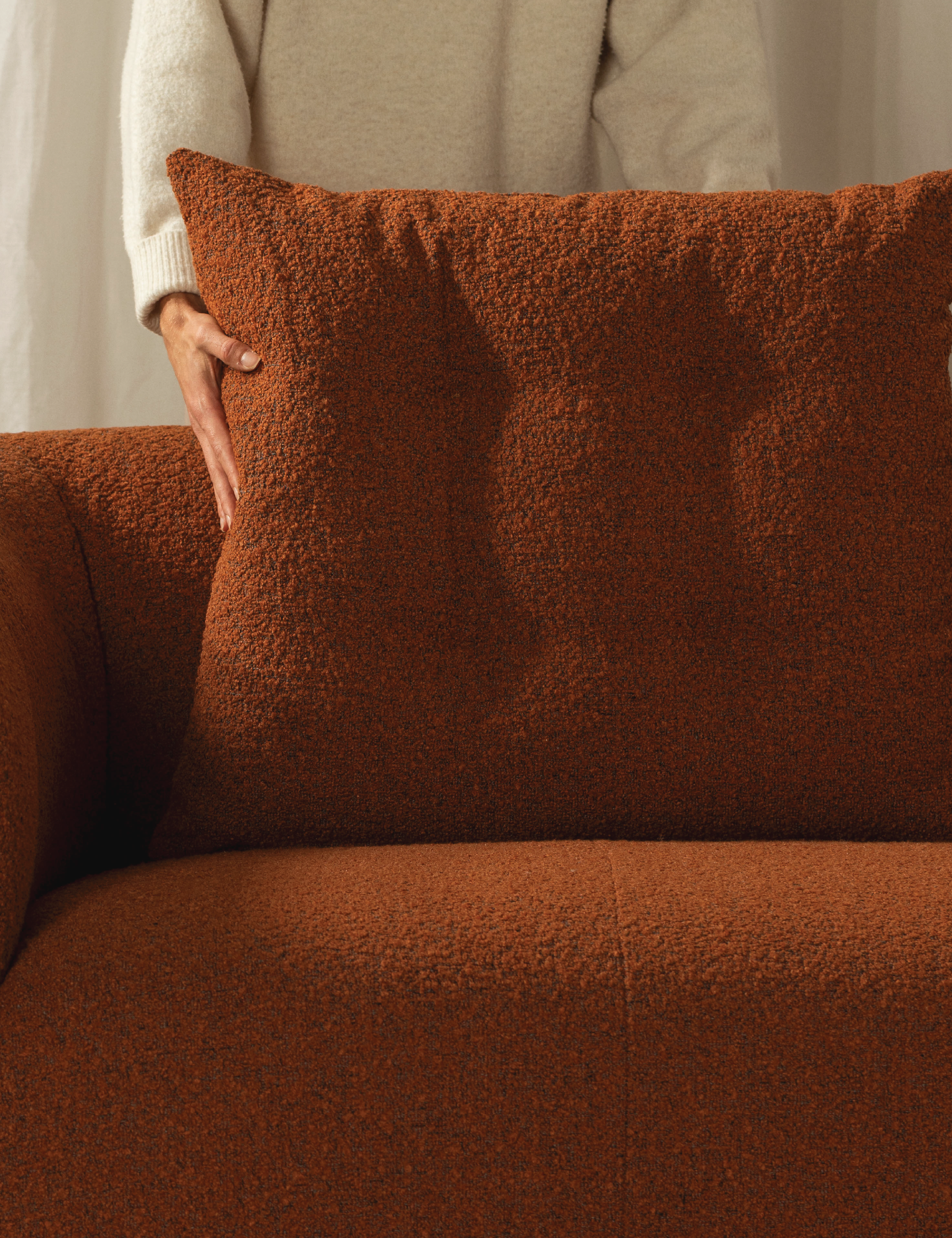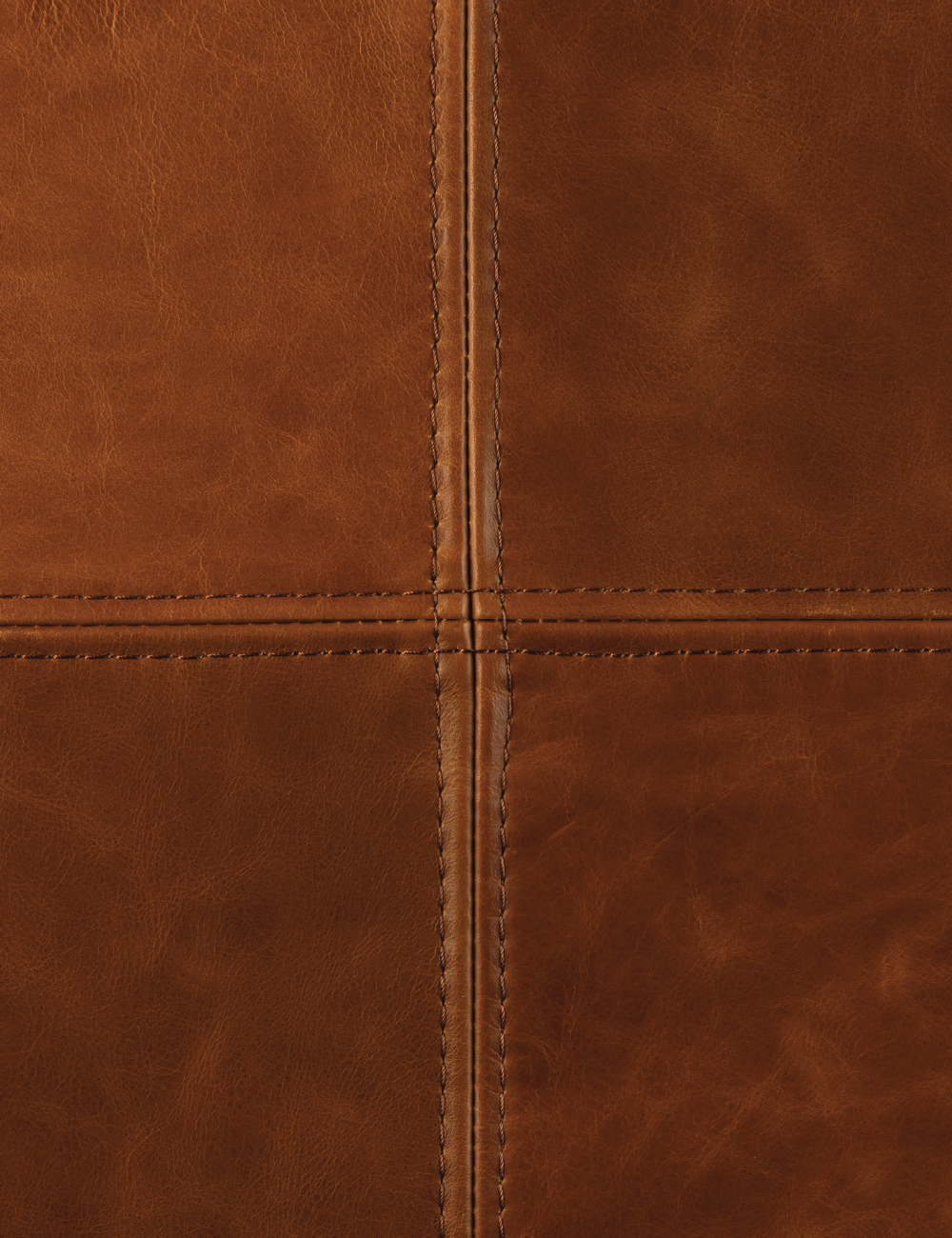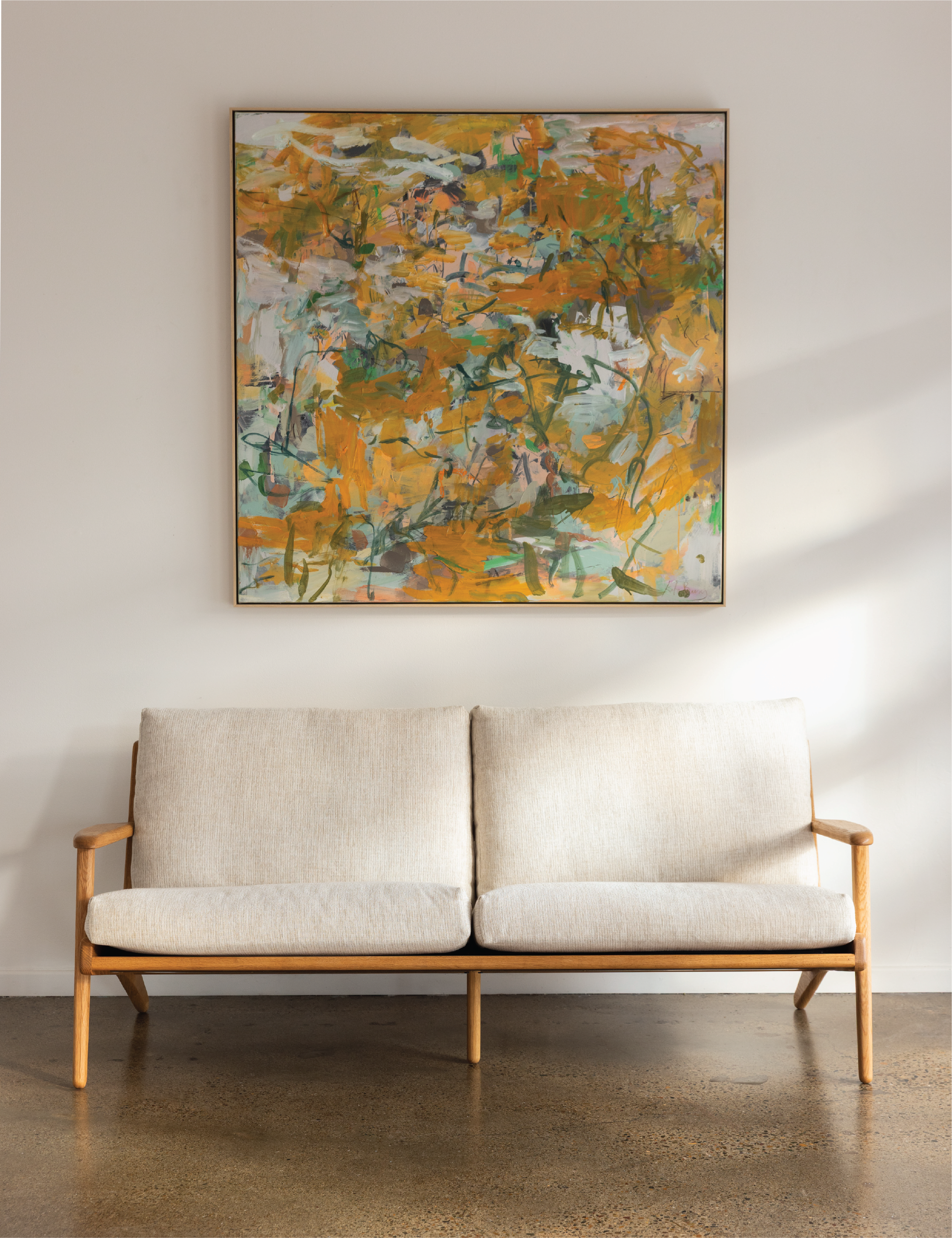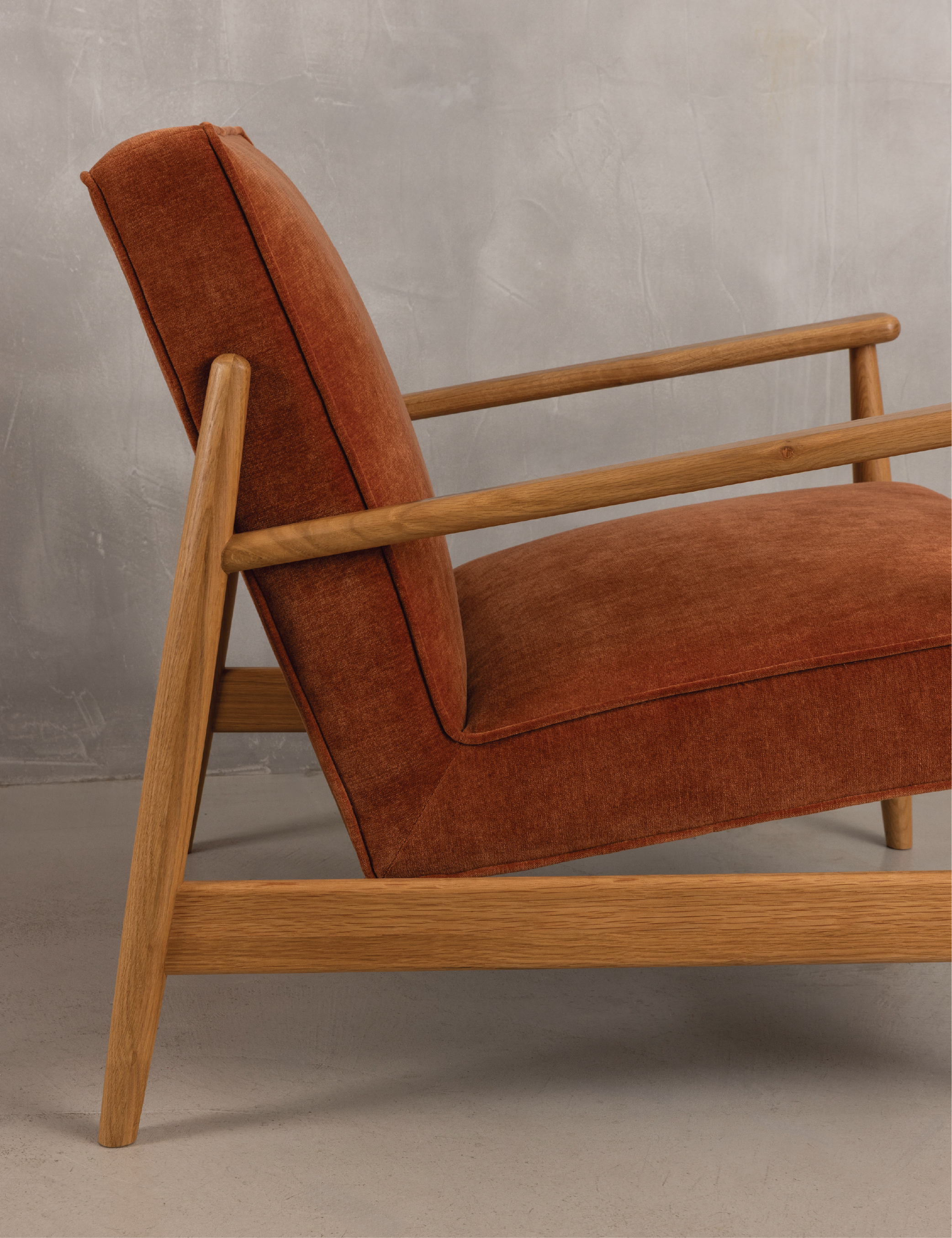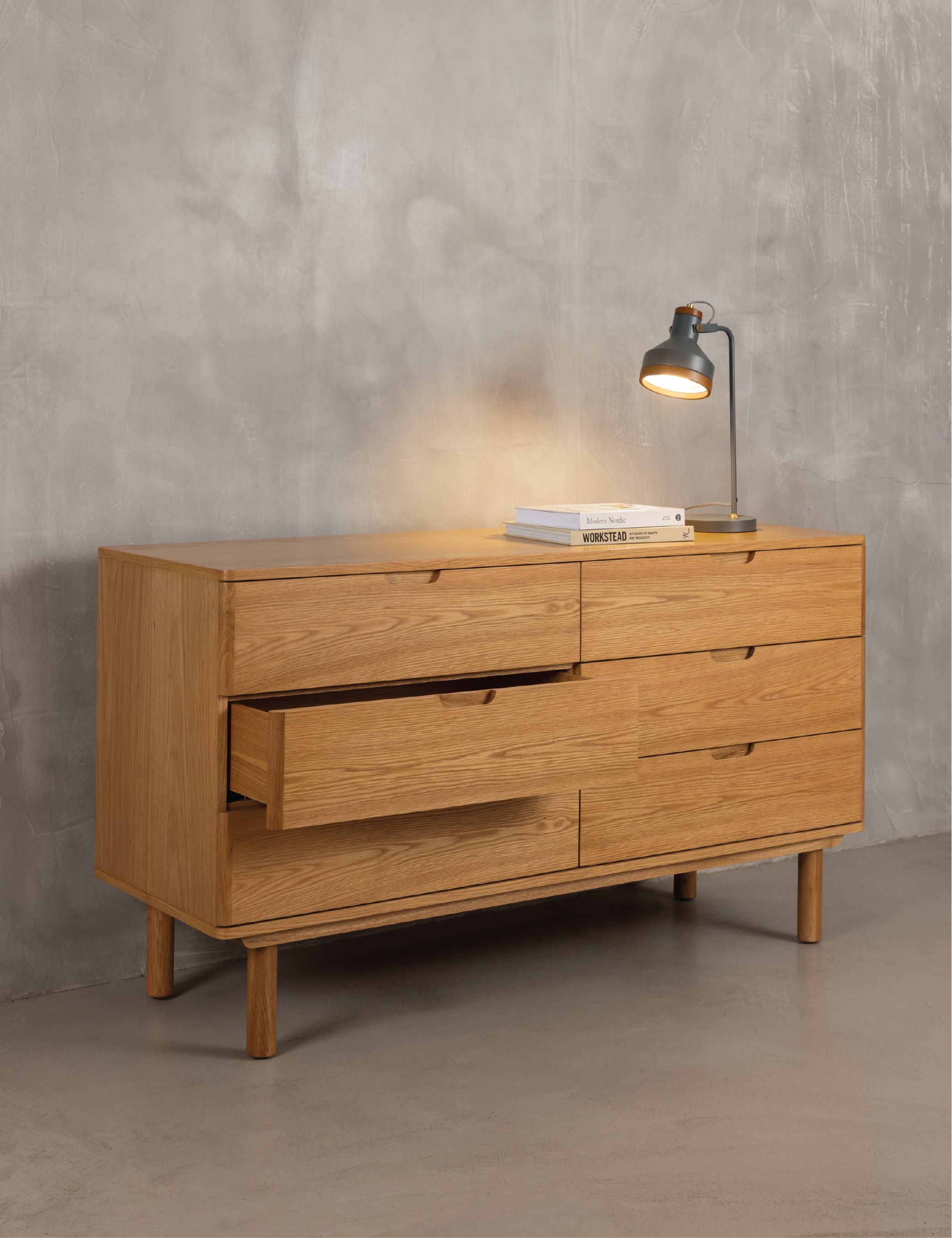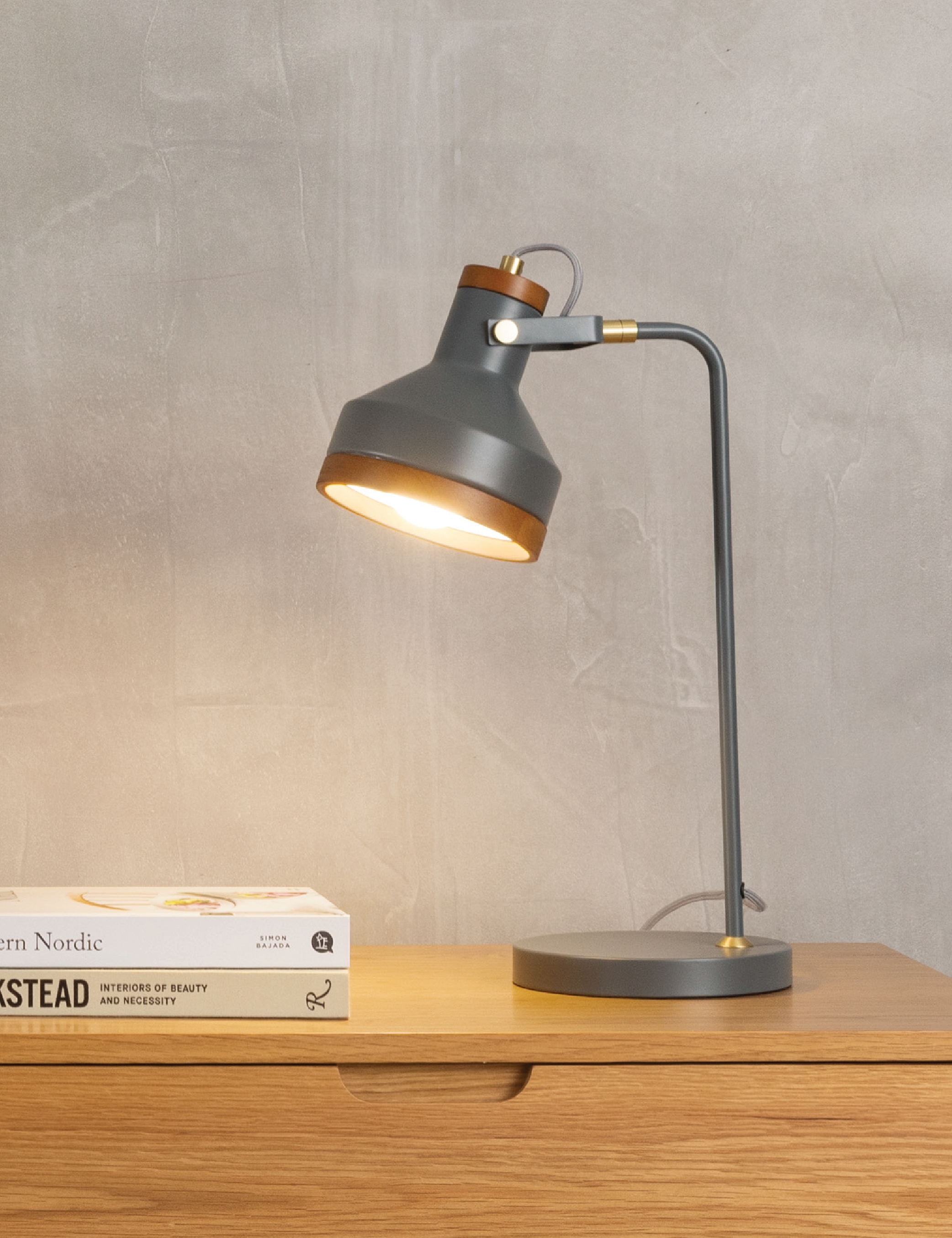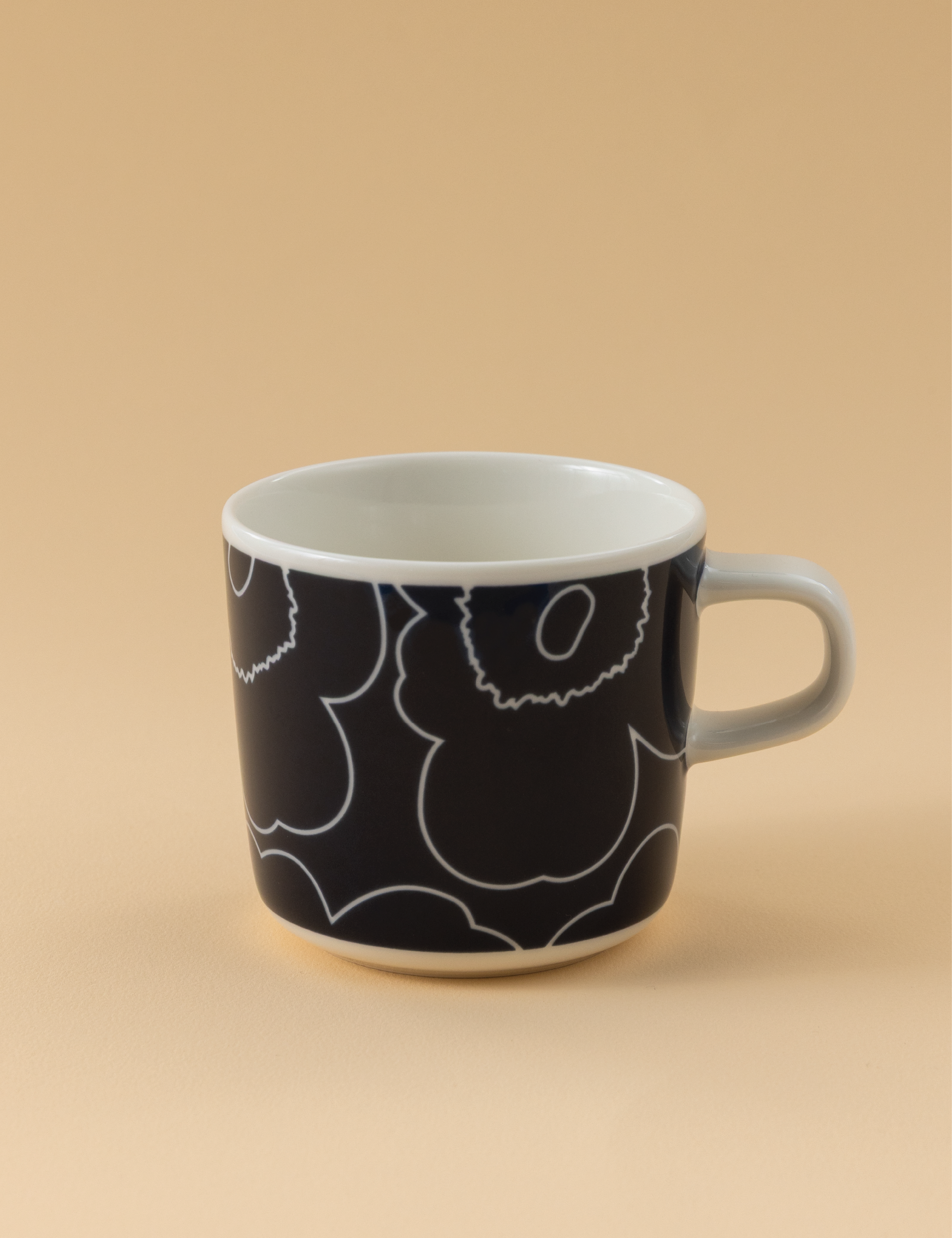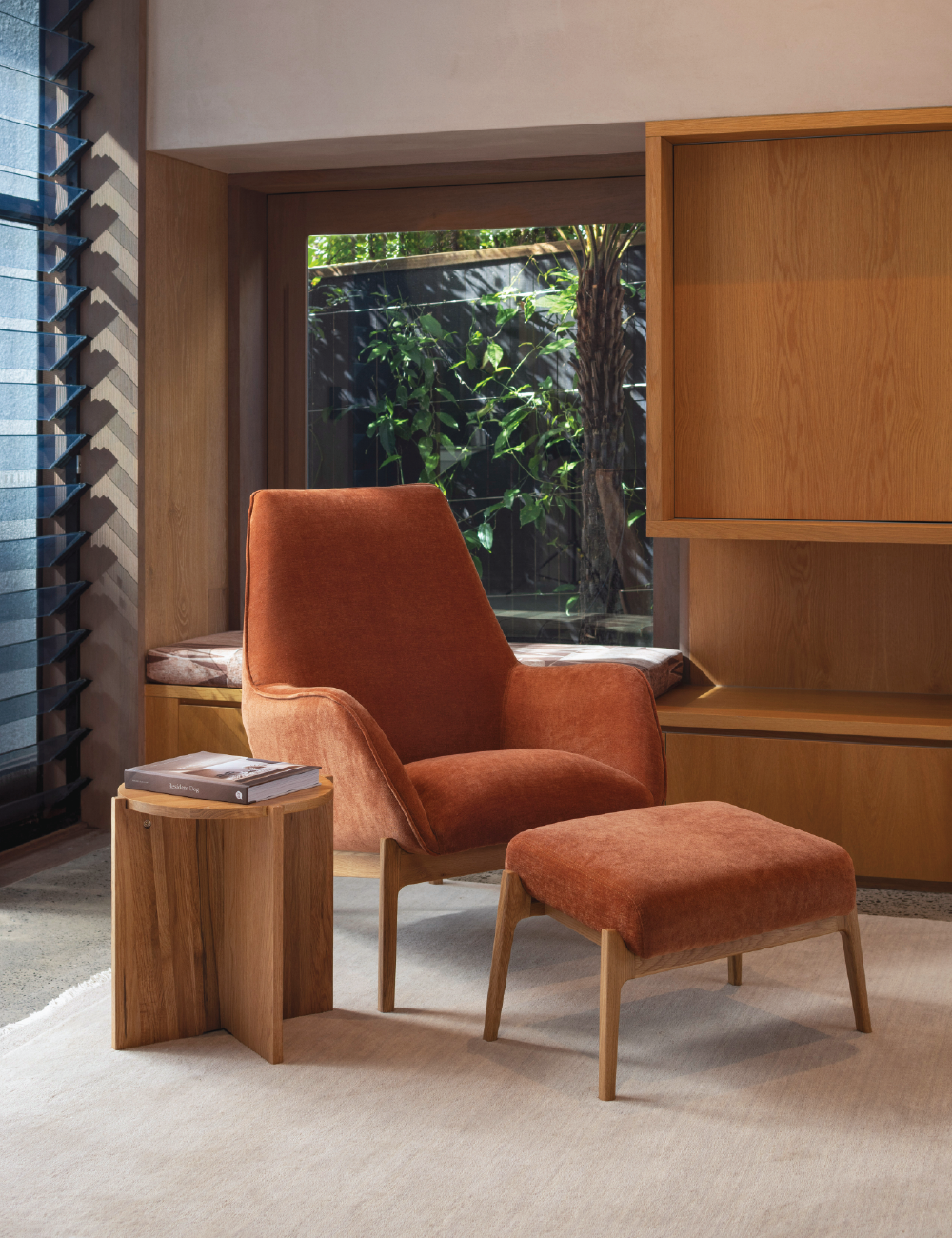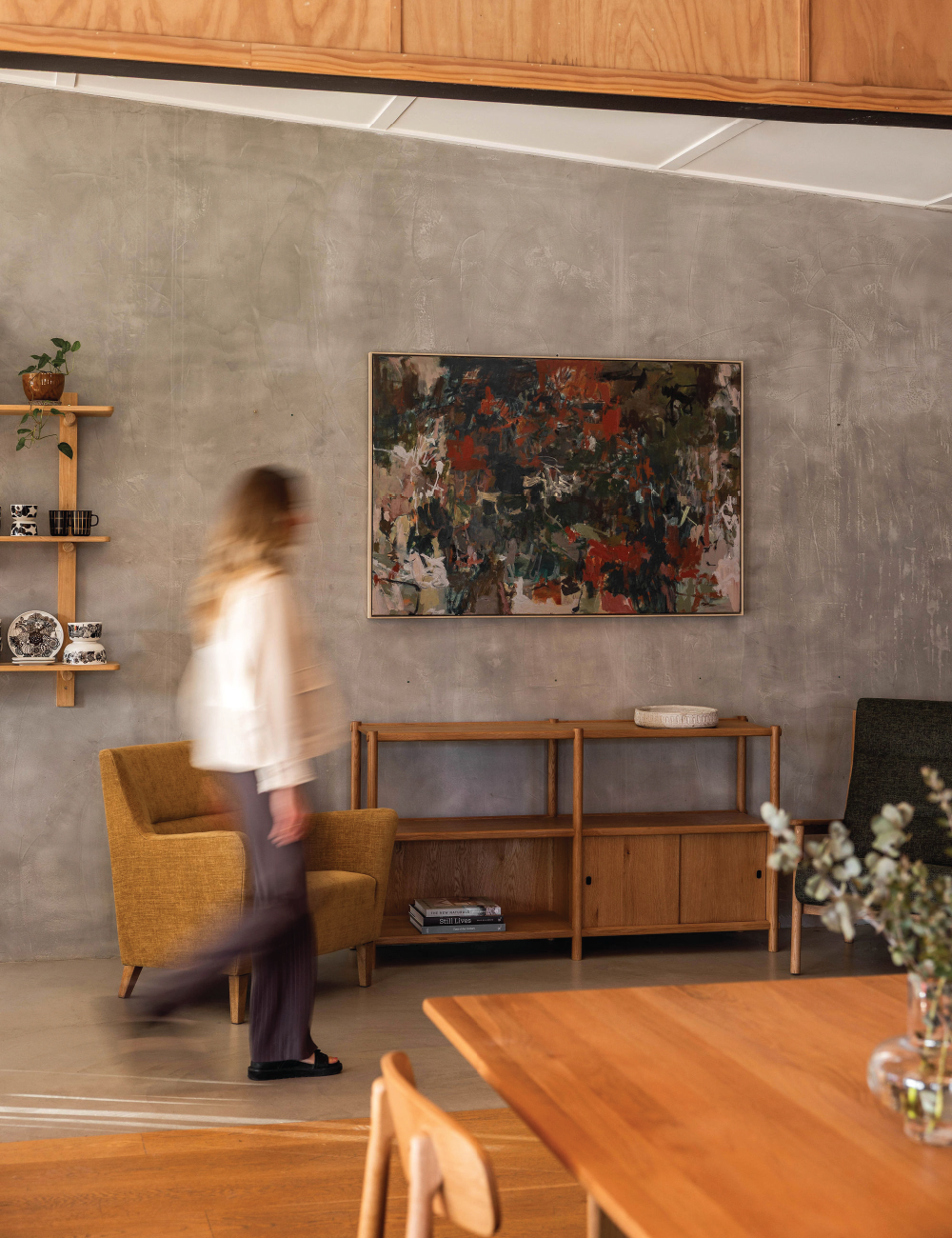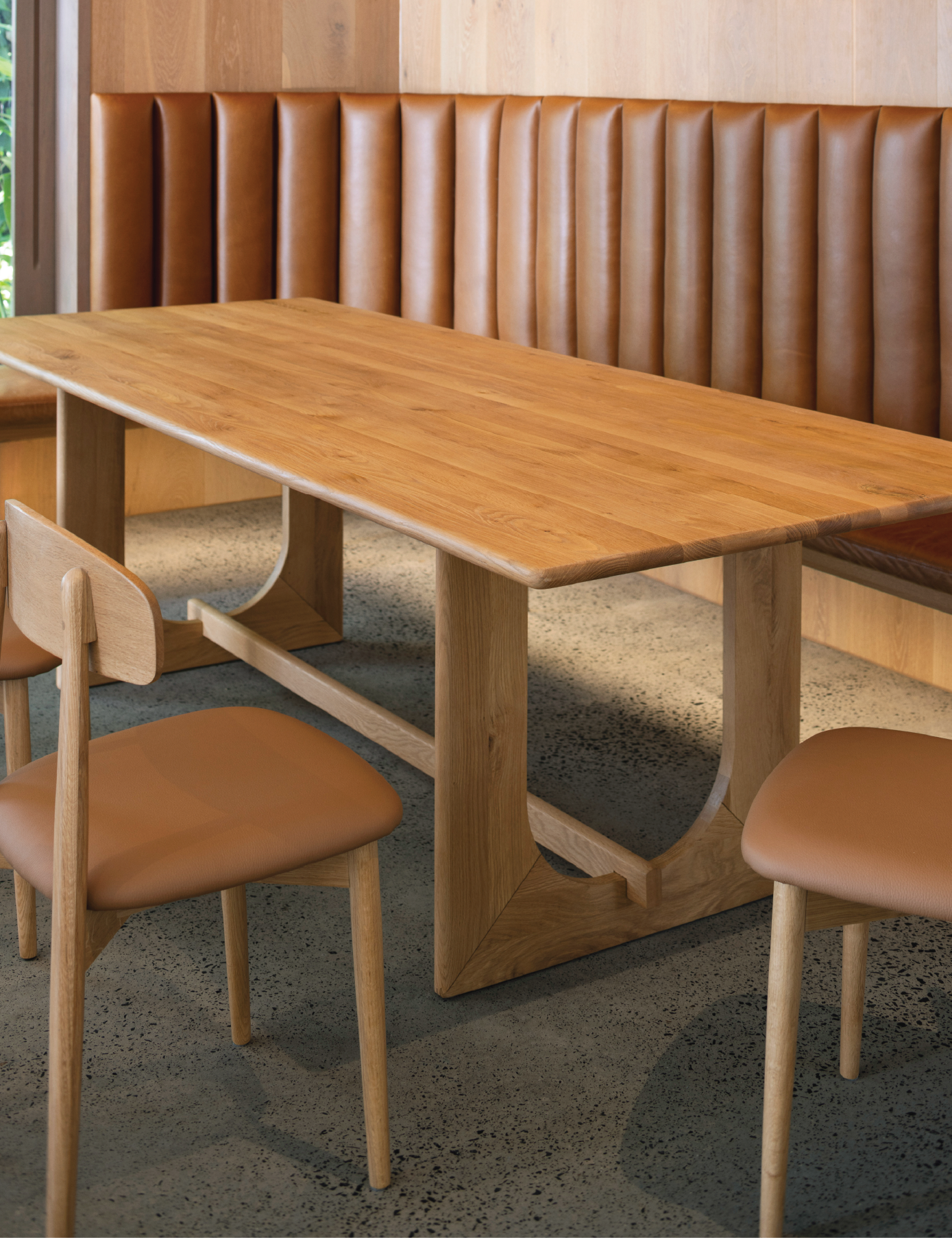PRODUCT CARE GUIDE
Our products require a little care and maintenance to keep them looking their best so you can enjoy them for many years to come. Please see our recommended care instructions for our range of different products and materials below. If you have any questions please get in touch with your closest showroom for more advice.
CARING FOR TIMBER
Our furniture is made from timber such as European Oak, American Oak, American Black Walnut, Elm, Birch, Ash, Asian Walnut and Beech. We use both solid timber and good quality timber veneer.
As a natural product, all timber responds to environmental conditions. It can change colour, expand, contract, warp and split if exposed to:
• Changes in temperature and humidity
• Heat sources such as open fires, gas heaters
• Heavily air-conditioned environments
• Indirect and direct sunlight
• Prolonged contact with moisture
Please be careful when moving your furniture as dragging it across the floor will cause damage to the joints. Both of our surface treatments - polyurethane lacquer and vegetable-based oil, provide some protection, but there are additional measures outlined below that you can take to care for your furniture.
Lacquered Timber
Some of our range is lacquered with a light polyurethane coating that seals the wood and provides some protection against liquid penetration, stains and hot dinnerware. The benefits of this surface finish are:
• A resistant hard coating with a satin finish
• Protection against spills
• No need to maintain with wood oils
• Simply wash with warm mild soapy water
Though the lacquer is durable, we still recommend the below:
• Use placemats on tables and avoid spillages
• Limit soapy water as used in excess it could cause the surface to become dull
• Avoid harsh chemicals
• Avoid dropping hard/sharp objects onto your lacquered furniture, this will cause the surface layer of lacquer to crack requiring full restoration by sanding and re-lacquering the entire surface
• If you have extensions for your dining table, please store these flat to prevent warping
Oiled Timber
The majority of our range is finish with a natural vegetable-based timber oil. The benefits of this surface finish are:
• It brings out the natural warmth and depth in the grain of the wood
• It penetrates the timber, providing protection from the inside
• You can repair a small area without having to restore the entire surface
• You can do these repairs at home by sanding and oiling the affected area
To care for your oiled timber, we recommend that you:
• Oil your furniture 1 to 2 times a year with a good quality vegetable-based oil to hydrate and protect the timber. The Modern can provide you with a German made natural oil
• Use placemats on tables, try to avoid spillages and wipe up any liquids immediately
• Do not use strong cleaning detergents on oiled furniture, as these can react negatively with an oiled finish leaving a mottled appearance, or cracks. The Modern can supply you with a natural PH neutral cleaner
Note: Oiled timber will react to UV light and change in tone more than lacquered furniture over time. This will occur whether your table is in direct light or indirect light.
Livos PH Neutral Cleaner and Oil
We sell both Livos timber cleaner and Livos timber oil in our showrooms. Find more information on Livos products here.
How to oil a piece of furniture:
• Place a protective sheet underneath your furniture to catch any drips
• Always follow the instructions on the oil container
• Test the oil in an inconspicuous place first
• First sand with fine sandpaper (400 grit) along the grain of the piece to make the surface smooth
• Sparingly apply the wood oil evenly with a dry cloth, wait until the surface is completely dry and repeat the oil application
• Leave this second coat to partially dry for 10 - 20 minutes, and wipe any excess oil from the surface
• Buff the area with a clean dry cloth, then leave the furniture before using it for a least 24 hours
• Always wash your cloth thoroughly in water afterwards and hang to dry, as oily rags left in balls can self-combust
The Timber Doctor
The Timber Doctor offers an extensive range of specialty surface repairs and restoration services. Decades of experience has enabled the formulation of high quality, specialized products and processes that The Timber Doctor technicians use every day more information here.
Timber Veneer
• Veneer is a thin layer of finely sliced genuine timber that is uniform in thickness applied to panels of another engineered material – such as particle board or MDF (medium density fibreboard). As it is genuine timber, veneer will display variations in grain and colour.
• Many people do not want to purchase timber veneer as they believe it is an inferior product but not all veneer is alike. The veneer we use at The Modern is a top-grade product that has many positive benefits.
The benefits of purchasing veneer:
Price
Timber veneer offers the visual appeal and warmth of real wood at an inexpensive price-point. Timber veneer furniture is cheaper to produce than solid timber so we can sell it with a lower price tag than solid timber.
Veneer Quality
Not all veneer is alike. It is manufactured in different thicknesses ranging from 0.4mm to 0.85mm in Australia. Our manufacturers use a reliable standard of veneer with a thickness of 0.6mm or more, as this thickness provides superior quality and stability against changing temperatures.
Strength
When timber veneer is applied to a substrate it increases the strength of the product. Furniture with timber veneer of 0.6mm or more provides stability against changing temperatures and moisture in the air. Veneered products do not expand and contract in the way solid timber does, therefore it does not warp or swell.
Character
Veneer uses the most interesting logs that may otherwise be unsuitable for solid furniture because the processing of veneering can use material taken from around knots and other imperfections. Veneer also allows for innovative and sleek designs that would often not be possible using solid wood that cannot be curved easily.
Environmental Credentials
Timber Veneer offers an eco-friendly alternative to using hardwood and is considered the greenest use of a tree. Using hardwood requires more trees to be cut compared to using thin veneers. 1CBM of log produces around 1000SQM of veneer, consequently it is the most economical way of using the precious material of genuine timber.
Wood veneers are a renewable resource and can be easily recycled. After its intended lifetime, wood veneer can be crushed to make wood waste which can be utilized in making particle board and MDF.
Provenance – Mid Century
Veneering dates to at least the ancient Egyptians who used expensive and rare wood veneers over cheaper timbers to produce their furniture and sarcophagi.
It was also extremely popular in furniture manufacture and commercial architecture during the mid 20th century and the timeless beauty of authentic vintage mid-century furniture attests to the lasting quality of veneer.
For those who want to style their interiors with mid-century modern influences there is nothing more authentic than timber veneer.
CARING FOR VENEER
• Dusting: Use only a soft, clean, dry microfibre cloth or feather duster.
• Light Cleaning: Wipe the surface with a clean damp cloth and dry immediately with a microfibre cloth to prevent streaking.
• Polishing: Use a high-quality silicone free furniture polish and a soft dry cloth. Abrasive polishes should be avoided. Always test a product on an inconspicuous area first.
• Extreme Temperature Changes: Extreme temperature changes may cause damage to the surface coating. Care should be taken in air conditioned or heated environments to keep temperature changes within reasonable limits. Use heat resistant place mats and tablecloths under hot food and beverages to avoid heat damage.
• Spillages: All spillages should be cleaned with a damp cloth as soon as possible. If moisture gets under the coating, it may cause white marking of the veneer surface. If the furniture has been in contact with acid liquids such as nail polish, vinegar, sodas, fruit juices, lemon or wine, always clean the area with lukewarm water and a PH neutral detergent, such as Livos PH Cleaner immediately. Do not use chemicals, acid, bleach or detergent based products.
• Direct and Indirect Light: Veneer surfaces will always change (to a greater or lesser degree) upon exposure to natural and artificial light, whether it is direct or indirect. Surfaces may fade, darken or yellow with age. To prevent discolouration, keep furniture out of direct sunlight and do not leave objects in the same position on a veneered surface over long period of time. Excessive sunshine may dry the veneer surface more quickly than the veneer substrate thereby causing small surface cracks parallel to the grain to appear and possible damage to the surface coating.
CARING FOR LEATHER
Good quality full grain leather will last a lifetime and develop a beautiful patina when well looked after. Taking care of your leather products will avoid any drying out or cracking that damages the look and feel. As a natural product, all leather responds to environmental conditions such as:
• Changes in temperature and humidity
• Heat sources such as open fires and gas heaters
• Heavily air-conditioned environments
• Indirect and direct sunlight
• Prolonged contact with moisture
Full Grain Leather
All the leather used in the manufacturing of our furniture is full grain leather. This means it is 100% leather as opposed to bonded leather (also known as 'constituted leather') which is a mix of leather and paper/fibre pulp adhered to an acrylic backing and finished with a polyurethane coat.
Full grain leather will vary depending on where the hide is taken from the animal. The thickness, pores and smoothness will vary between batches. Some softening and marking of hides over time is normal and should be expected. As our leather is hand dyed, colour can also vary between batches. If you are purchasing more than one matching leather item, we advise you to purchase from the same batch.
How to care for Full Grain Leather:
• To nourish and hydrate your leather, we recommend using a good leather conditioner designed for full grain leather every 6 months
• Always read the instructions on the container and test on a small inconspicuous area first with a colourfast cloth
• For cleaning, leather should be wiped regularly with a warm damp cloth to remove dust and dirt, which can affect the surface over time
• For stains you can spot clean with a good leather cleaner and a colourfast cloth
• To treat difficult stains, we recommend contacting a specialist leather cleaner
• Tinted conditioner can restore the colour to leather that has faded from over exposure to sunlight
Analine Leather
Some of our furniture is made from aniline leather, which is a full grain leather that has been dyed with soluble dyes rather than covering the surface with a topcoat (which is known as 'pigmented leather'). This results in a product that retains the natural grain of the hide, producing the most natural looking leathers.
Aniline leather is considered the best quality leather as the very best hides are selected to produce this effect. Unique tonal changes of the animal hide are commonplace and normal usage and wear will cause marking that is not a fault and is considered an attractive feature of aniline leather that develops a beautiful, aged surface over the years.
How to care for Aniline Leather:
• Aniline leather has no UV properties, making it more susceptible to fading as the dyes are affected by sunlight. It is therefore extremely important to avoid exposure of your furniture to harsh UV light
• To condition and re-hydrate your leather, we recommend using a good leather conditioner designed for aniline leather every 6 months
• Always read the instructions on the container and test products on an inconspicuous area with a colourfast cloth
• Leather should be wiped regularly with a warm damp cloth to remove dust and dirt, which can affect the surface over time
• For stains you can spot clean with a good aniline leather cleaner and a colourfast cloth
• To treat for difficult stains, we recommend contacting a specialist leather cleaner
• Tinted conditioner can restore the colour to leather that has faded from over exposure to sunlight
Microseal for Leather
You can add further protection to Aniline leather by having it Microsealed more information here. This permanent, non-toxic and natural application penetrates the fibres of the leather and will prevent stains and provide UV protection, which slows down fading. Protection will also prevent damage from body oils and make the leather easier to clean.
The Leather Doctor
The Leather Doctor can complete repairs on an array of both commercial and domestic leather, vinyl and vegan leather (PU) to the highest possible standards more information here.
Care Cover for Leather
Care Cover leather care products are natural and biodegradable products used by Care Cover leather professionals. They are specifically formulated for the harsh Australian climate and once applied to leather, PU or Vinyl furniture, are designed to repel moisture more information here.
Leather SPEW (SPUE)
The term spew or spue refers to the migration of fats/oils from within leather that crystallize on the surface when they meet the air. The crystals form on the surface as a white powder or as a ‘bloom’ but are often mistaken for mould or mildew.
The key indicator that you have spew rather than mould is that spew is very white in appearance. Mould tends to be green/grey in colour particularly on leather.
Spew can look very powdery and will be slightly waxy in appearance (try rubbing a bit between your fingers and you will feel this).
Spew is exacerbated by changes in humidity and temperature. It will often appear in cold or damp conditions. To identify spew simply heat with a hairdryer and it will disappear but will then reappear on the surface after some time.
Cleaning Spew:
• Spew can be wiped away with a damp cloth, but it will eventually reappear without additional treatment
• Use a good quality spew remover such as Leather Master Spew Remover or Leather Hero Spew Remover
• Check the product works with the kind of leather to be cleaned and wipe it onto the leather with a soft dry cloth
• Once this is used the spew will disappear and most often not return
CARING FOR UPHOLSTERY FABRIC
Our commercial grade upholstery fabrics are selected for their durability and easy-care requirements. To look after your upholstery and extend the life of it please follow the guidelines below:
• Keep your fabric upholstery out of direct sunlight
• Vacuum your furniture regularly to remove a buildup of dust that can weaken fibres
• Avoid contact with liquids and treat stains immediately by sponging with warm water and a mild PH neutral soap onto the affected area, do not rub or treat with harsh cleaners
• Many of our upholstery covers are removable and machine washable – turn covers inside out and wash separately in cool water. Lie flat to dry
• For tough stains you can have your covers dry-cleaned
• If your covers are not removable, it is best to have a specialist upholstery cleaner such as The Fabric Doctor service them once a year
Microseal for Fabric
To protect your upholstery fabric before use, we recommend having your sofa or chairs Microsealed more information here to provide extra protection against dirt, dust, body oils, stains and UV fading. Microsealing is a permanent, non-toxic and natural application so it can take place in your home and your furniture can be used straight away.
The Fabric Doctor
The Fabric Doctor can provide customers with high-quality fabric upholstery cleaning and stain removal services that extend the life of fabric furniture. Their products are eco-friendly and non-toxic, robust enough to clean the deepest stains, but gentle enough so as to not damage furniture more information here.
Care Cover for Fabric
As an alternative to hiring a specialist cleaner, customers can purchase a Care Cover Fabric Care kit which is designed to assist in caring for and maintaining the longevity of fabric furniture more information here. The Fabric Care products will not affect the look, feel or condition of fabric, and are designed to leave no surface residue.
Pilling
Is your fabric looking a little fuzzy or matted? This is an effect commonly known as 'pilling' and might cause you concern that something is wrong with the fabric. Luckily, pilling is completely normal and easily fixed.
Pilling is not a fault or a sign of an inferior product. It often occurs during the settling stages of a new item (3 to 4 months) as fibres rise to the surface of the fabric and form tiny balls. Fibres also transfer between fabrics (such as throws, pillows or even clothing) which means that pilling may present itself later in the life of your furniture too.
The good news is that pilling can be successfully and easily removed using a battery operated de-pilling device. De-pilling only removes the fibres that have risen to the surface and does not affect fabric performance.
If you are concerned about pilling or any maintenance of your fabric, the best thing to do is contact your nearest showroom to have a chat with our someone from our friendly showroom teams. They are also able to give you the best advice about fabric options in our range that will best suit your home and your needs before you buy.
NATURAL FIBRE RUGS & MATS
We sell rugs from two Australian companies Bayliss and Warwick Weave.
BAYLISS
Bayliss rugs are handmade in India using high quality fibres like New Zealand wool, linen, silk, jute, sisal, hemp and viscose to ensure their rugs are both highly functional and beautiful. You can find more information about maintaining rugs from Bayliss here.
WARWICK WEAVE
Warwick specialise in creating artisan handmade rugs. Their ongoing commitment to ethical and sustainable practices also means that all rugs are made using natural materials, such as wool, cotton and jute. You can find more information about maintaining rugs from Warwick here.
RUG CARE
We recommend taking the following preventive measures to ensure that you enjoy your new rug for a long time.
• Exposure to indirect or direct sunlight over long periods can cause the colour of a rug to fade. If you can, turn your rug over and rotate it to ensure even wear and a uniform appearance
• Vacuum cleaning – dust and dirt particles can be removed effectively before they become embedded in the pile by thoroughly vacuuming the rug as necessary (caution: clean only with a flat nozzle, without the brush attachment)
• Do not keep your rug in a damp area, prolonged exposure to damp can cause mould
• Wool – Pilling/shedding is a natural characteristic of rugs that contain wool. Vacuum as necessary and rug rotation is recommended. Avoid pulling fibres from surface pile and trim excess fibres back to surface pile. Clean spills immediately by blotting (not rubbing) with a clean sponge or cloth
• Viscose (made from wood pulp) – Viscose never has the same appearance after it has met moisture/spills. Clean spills immediately by blotting (not rubbing) with a clean sponge or cloth, do not rub
• Sisal, jute and hemp - These rugs will change over time, especially when exposed to sunlight. Regular vacuuming is the best practice to keep the fresh appearance of a natural fibre. Visible and loose dirt should be vacuumed with a strong brush-suction vacuum. Do not use the beater bar on these rugs. Sisal, jute and hemp fibres never have the same appearance after they have met moisture/spills.
We recommend Microseal for their rug protection formulas. To organise Microsealing, please contact your nearest showroom.
Pop Ups
Pop-ups are another completely normal characteristic of handwoven rugs which are made by weaving the yarn back and forth across the loom until the piece of yarn ends. In all carpet and rug weaving, these threads are tucked in as the new piece of yarn is started.
A pop-up occurs when the very end of the yarn works its way loose. They should not be considered a fault, or a reason for return. Pop-ups can either be left alone, gently cut off, or pushed back into the structure of the rug. They do not compromise the structural integrity of a handwoven rug.
Brita Rugs
Brita rugs are made from toxin free woven vinyl. They are very durable so if you follow these care instructions, they will be yours for a long time:
• Shake or vacuum your rug regularly. When shaking, hold the sides of the rug instead of the welding ending
• Do not shake your rug if it is stiff from cold weather, wait until it soft and pliable to avoid damaging the material
• Wipe stains immediately with a wet cloth and mild detergent
• You can wash your rug in your washing machine in 30 degrees Celsius with a mild detergent
• Do not spin it in the washing machine
• When the rug is dry, take it out and stretch it from the sides to avoid the welding ending. Hang it to dry
• Your rug will shrink 3-4% after the first wash
• If you are storing your rug for some time, make sure it is completely dry and roll it.
• Do not use tape directly on the surface of the rug
FOAM AND INSERTS
Our armchair and sofa cushion inserts are created from high density upholstery foam. Foam inners will soften and conform to the shape of your body over time. We recommend rotating all seats and cushions regularly. Cushions need to be ‘plumped up’ regularly to maintain their appearance and shape.
FEATHERS
Some of our inserts contain a mix of upholstery foam and feathers. A feather-filled seat cushion will naturally start to dip and create lumps depending on how you lounge on it and especially if someone sits in the same spot continuously. The nature of feather is to compact. To stop the feathers from compressing, inserts need to be regularly plumped by shaking, bashing and reshaping. This will manipulate the feathers back into a full shape.
PAPER CORD
Paper cord is a 3-ply paper product that is commonly used to weave a seat on Danish furniture. It is very strong and can last many years with normal use, but it has no surface finish. Overtime through exposure to UV it will change appearance and age beautifully if cared for correctly, please follow these guidelines to maintain your papercord:
• Cleaning is best done with a solution of 1 TBS of white soap flakes (like Lux) in 1 litre of warm water
• Use a soft cloth and wash gently, it is important that the papercord is not drenched in the solution and that it is moistened evenly to avoid staining as the surface dries
• Without rinsing allow the furniture to dry at room temperature so the soap solution is absorbed into the paper cord
• Repeat the process if the cord is badly soiled
• For harsh stains please use a specialist upholstery cleaner
We recommend a MicroSeal application to protect your Papercord, find more info here.
MARBLE
Our Marble coffee tables and side tables are made from hand polished marble, so the surface has a handmade appearance. The variations in tone and the individual markings in the surface of the marble are not a fault but a characteristic of this natural product. Marble is a porous material, so it is important that you use coasters and placemats and avoid liquid sitting on the marble for any length of time. Wipe up spills immediately and clean regularly with a warm damp cloth and soapy water.
Cleaning Marble
• Marble is a porous material, so it is important that customers use coasters and placemats and avoid liquid sitting on the marble for any length of time
• Spills (even water) need to be cleaned up immediately and blotted instead of wiped, which will spread the liquid over a larger area. Be especially quick about spills of alcohol or citrus drinks
• Marble can be cleaned regularly with a warm damp cloth and a small amount of a mild, pH-neutral, non-abrasive soap. If too much soap is used it may leave a film behind
• Acidic cleaners like vinegar, window cleaner, and bleach should not come into contact with marble. Similarly, gritty cleaners that contain abrasive particles or rough sponges will scratch the finish of the marble
• After cleaning rinse and dry immediately
Removing Stains from Marble
Once the spill has been cleaned, treat stains from organic materials like coffee, wine, food, or pet urine with a solution of 12% hydrogen peroxide with a few drops of ammonia. An oil-based stain like milk, cosmetics, or cooking oil should be lifted with acetone or mineral spirits and then rinsed away.
Specialist marble cleaning products can be purchased in Australia from The Marble Man, you can find more information here.
GLASS
We use toughened safety glass for some of our coffee tables, though it is very durable all glass can scratch if impacted with a sharp object. Please clean regularly with a lint free cloth and a reliable glass cleaning product.
Cleaning Glass
• Remove any dirt particles from the surface of glass using a sponge or a soft dry cloth. Although paper towels can be used for wiping the surface, they might leave some streaks
• Use a standard glass cleaner containing ammonia, or a multi-surface cleaner that contains vinegar
• A very effective glass cleaner can be made at home by combining one cup of pure water, one tablespoon of vinegar, and one cup of alcohol in a clean spray bottle
• A microfibre or lint free cloth is best to wipe off the surface after spraying. This will leave the surface streak-free
LINOLEUM
The Linoleum (Lino) used in some of our furniture is a natural, biodegradable product – see the list of ingredients below:
• Wood flour
• Cork dust
• Jute
• Pine Tree resin
• Linseed oil
Caring for Linoleum
Although it is durable, linoleum is, like wood, susceptible to damage from excessive moisture. Use only small amounts of lukewarm or cool water, and do not use ammonia-based cleaners. If you do want to use a cleaner stick with natural cleaners made with products you have at home:
Baking Soda and Vinegar
• Stir one tablespoon baking soda and one tablespoon vinegar with 1 cup of water
• Fill a spray bottle with the mixture
• Spray the solution and leave it for 5 minutes to suck up all dust particles
• Clean the solution off with a damp cloth
• If you have a scratch into the top layer of your linoleum, rub the area with a suitable linoleum restorer
MARIMEKKO FABRIC
100% cotton or linen
Marimekko fabrics are printed using either a flat bed or rotary printing method. Printing large print fabrics using the flat bed method leaves a repeat line at the end of the pattern and the prominence of this line depends on the fabric’s colour and pattern. The repeat line is not a flaw but a feature of the printing technique.
Please visit Marimekko for comprehensive care instructions [here]. To start caring for your Marimekko fabric please follow these guidelines:
• Fabrics should be washed separately at 60 deg C before sewing to remove any excess dye and to accommodate a small amount of shrinkage
• Use a detergent that does not contain any bleach or brightening agents
• Soaking is not recommended as colour may bleed onto light areas
• Dry cleaning is not recommended to ensure the original appearance is maintained
• Excessive sunlight will eventually fade colours
MARIMEKKO TOWELS
• Refer to the care label for the recommended washing temperature. Always follow the suggested temperature, as colors may bleed at too low a temperature.
• Strongly coloured towels may release some dye, especially during the first few washes. Wash these items with similar colours. Use a colour-safe detergent that does not contain bleaching agents or optical brighteners.
• The moisture absorbency of towels improves with washing. Avoid using fabric softeners on towels, as they may reduce the material's absorbency.
MARIMEKKO CERAMICS
• Most Marimekko ceramics are dishwasher safe. Always check the cleaning recommendations on the product’s bottom stamp or in the provided care instructions.
• For products with golden accents, we recommend hand washing. If using a dishwasher, ensure that the items do not touch each other during the wash.
MARIMEKKO GLASSWARE
• Please note that Marimekko glassware is not oven, microwave or freezer-safe.
• While hand washing is the gentlest method, most Marimekko glassware is dishwasher-safe.
• Check the product’s care instructions to confirm. If using a dishwasher, select a gentle glassware cycle (max. 50°C) and ensure items are spaced to avoid contact during washing.


